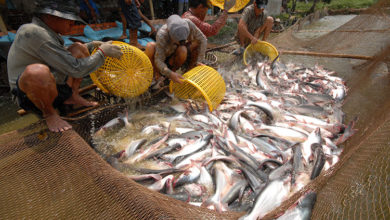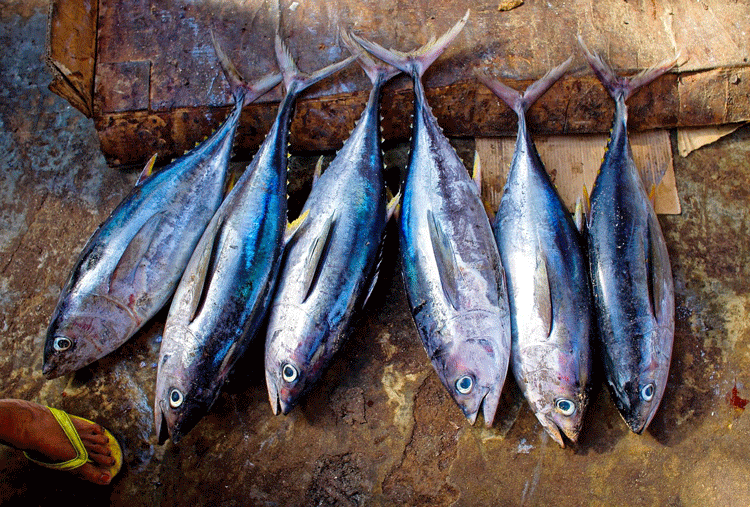Vietnam: Shrimp exports set sights on $4 billion target
It is anticipated that shrimp exports to key markets such as the U.S. and the EU will experience robust growth in the latter part of the year, with the potential to achieve the $4 billion target in 2024.
According to the latest report from the Ministry of Agriculture and Rural Development (MARD), Vietnam’s seafood export revenue reached an estimated $5.29 billion in the first seven months of 2024, marking a 7.3% increase compared to the same period last year and ranking second in agricultural export turnover.
Of this, shrimp exports alone generated $2 billion, a 7.5% year-on-year increase, solidifying shrimp’s leading position in the seafood industry. Vietnam currently ranks among the top three shrimp-exporting countries globally, accounting for 13-14% of the world’s shrimp export value. Vietnamese shrimp is now exported to approximately 100 countries and territories.
Promising trends
The price of whiteleg shrimp, Vietnam’s most prominent shrimp product, is showing signs of recovery in several markets. Specifically, the average export price of whiteleg shrimp to China increased by 3.1% from the previous month to $6.5/kg; to the U.S., it rose by 2% to $10.2/kg; and to Japan, it climbed by 3.4% to $8.8/kg.
In the first half of this year, countries such as China, the U.S., Japan, and the EU continued to invest heavily in purchasing Vietnamese shrimp, contributing to sustained positive growth in export revenue. Notably, shrimp exports to China (including Hong Kong) reached $328 million, a robust 17% increase over the same period last year. Among Vietnam’s top five shrimp export markets, China recorded the highest growth rate.
Moreover, in the first half of the year, China—Vietnam’s largest lobster buyer—significantly increased its purchases, leading to an astonishing 57-fold surge in lobster export revenue compared to the same period last year. However, in the coming months, Ecuador, India, and Indonesia are expected to focus more on the Chinese market due to high tariffs imposed by the U.S. As a result, Vietnamese shrimp exports to China, particularly whole black tiger shrimp and whole whiteleg shrimp, will face increased price competition.
In the Japanese market, although shrimp exports reached only $229 million, down 3%, Vietnam’s value-added products in Japan continue to maintain a competitive edge over other suppliers like India and Ecuador. The Vietnam Association of Seafood Exporters and Producers (VASEP) anticipates a slight increase in import demand from the Japanese and South Korean markets starting in September to meet year-end demand.
The EU market saw shrimp export revenue of $217 million, a 13% increase compared to the same period in 2023. After the first quarter of 2024, shrimp exports to the EU grew steadily. In June, shrimp exports to the EU reached $52 million, up 31%. In the first six months of the year, cumulative exports to the EU market reached $217 million, a 13% increase. The EU’s demand for shrimp imports is expected to continue rising in the coming months.
Challenges ahead
Despite these positive developments, Vietnam’s shrimp industry faces two major challenges. First, the export price of shrimp remains low due to competition from Ecuadorian and Indian shrimp. Second, the shrimp farming sector is grappling with complex and unresolved disease issues, potentially leading to a shortage of raw shrimp in the second half of 2024.
“The export price of shrimp to various markets is currently low, with fierce competition from Ecuador and India. Although Ecuador’s shrimp industry faced many difficulties in 2024, the country still increased its exports and penetrated markets including Japan, Australia, and the EU. Ecuador now holds a significant market share in the U.S., China, and even India. Additionally, the shrimp industry is also dealing with disease issues, particularly Translucent White Liver (TPD) disease,” shared Le Hang, a VASEP representative.
The Vietnam Fisheries Association also noted that rising input costs will make it difficult for Vietnam to compete on price with Ecuador and India. Furthermore, climate change presents another challenge to shrimp exports.
According to the Directorate of Fisheries, shrimp production costs in Vietnam remain higher than in other regional countries due to the high cost of shrimp feed, which accounts for over 65% of the production cost in industrial shrimp farming.
Optimistic Outlook
MARD forecasts that Vietnam’s shrimp exports will recover in 2024, with a slight increase of 10-15%, potentially generating over $4 billion in revenue.
This optimistic outlook is driven by the gradual recovery of economies in key shrimp-consuming countries, where demand for seafood-based protein is increasingly replacing animal-based protein, offering opportunities for growth in the shrimp and seafood sectors.
Domestic companies are also actively expanding and exploring new markets to reduce reliance on a few traditional markets. Diversifying export markets will provide the shrimp industry with more opportunities for sustainable and stable growth in the long term.
Moreover, the government and relevant agencies are making efforts to support businesses through preferential policies, creating favorable conditions for exports and improving product quality. Research and development programs focusing on new technologies in shrimp farming and processing are also being prioritized to enhance productivity and product quality, meeting the stringent standards of demanding markets.
VFM






